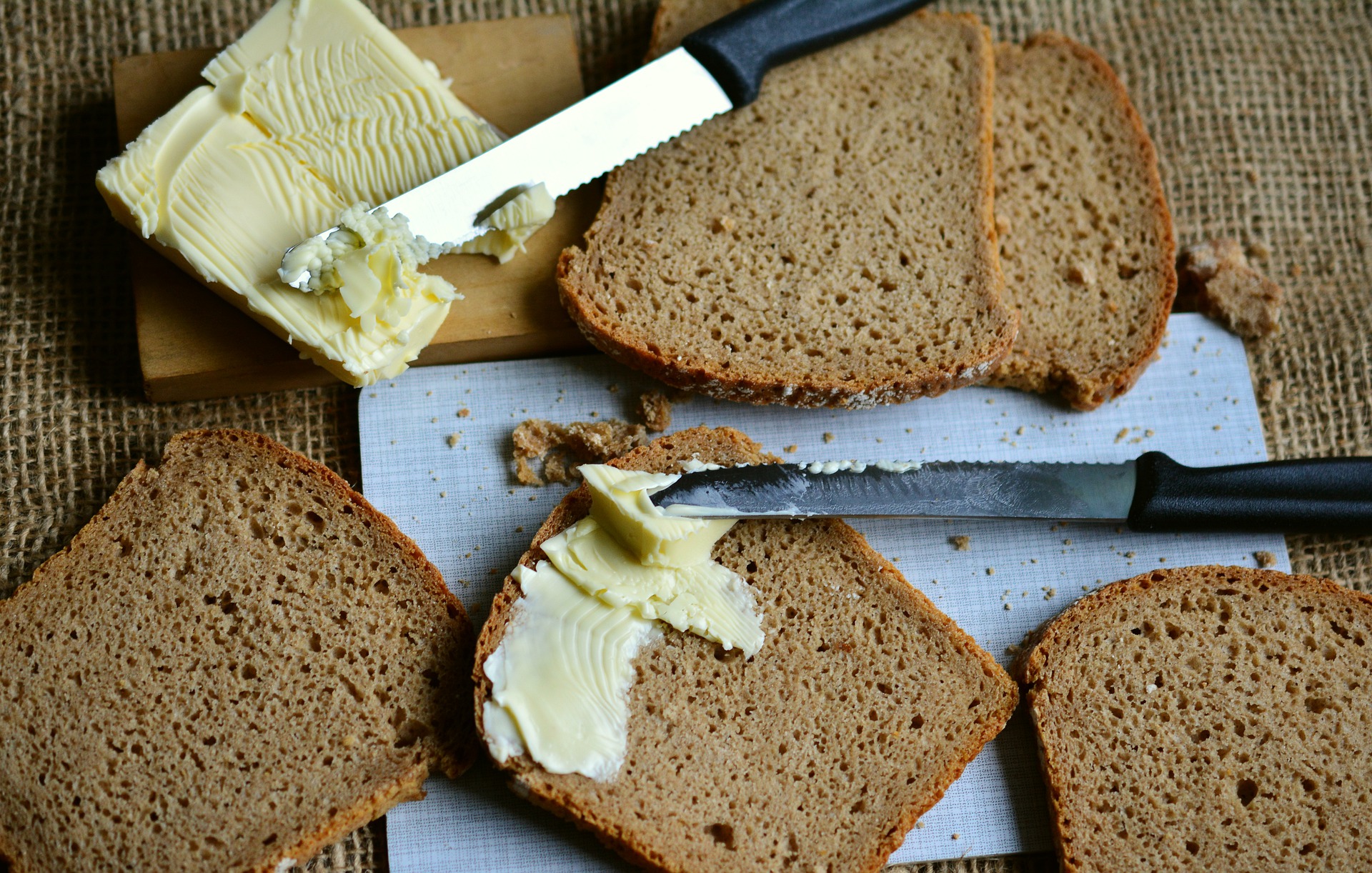

This post has been updated. It was originally published on February 1, 2018.
Every January, fat’s in the crosshairs of health columnists, fitness magazines, and desperate Americans. This year, PopSci looks at the macronutrient beyond its most negative associations. What’s fat good for? How do we get it to go where we want it to? Where does it wander when it’s lost? This, my friends, is Fat Month.
In the movie Mean Girls, Regina George—who, due to some shenanigans, is attempting to lose weight via a high-carbohydrate diet—famously asks her clique if butter is a carb. Cady Heron, the frenemy responsible for her misguided nutritional plan, replies in the affirmative.
We all know that Cady was being a real jerk: there’s no research supporting high-carbohydrate diets for weight loss, and butter is indeed a fat. But the question raises an important point. So many diets over the years have shunned various macronutrients, and the trends all contradict one another. Once the low-fat diet loses its popularity grip, the high-fat, low-carb one is right there to take its place. These fads can so easy taint our perception of what is actually healthy. Let’s take a hard look at what carbohydrates, fats, and proteins actually are—and how they keep you healthy.
Butter, bread, what’s the difference?
When we consider the nutritional profile of a food, it’s often broken up into macro and micronutrients. Macronutrients essentially make up the bulk of human energy. Carbohydrates, fats, and proteins are the primary players. Each of them are unique in their chemical compositions, as well in how our bodies break them down for fuel.
Carbohydrates, which can take the form of anything from bread to pasta to sour patch kids, are broken up into simple and complex forms. A simple carbohydrate is basically any sugar molecule. These group up into long chains to create complex carbs, which your body breaks back down into simple sugars upon ingestion. Carbohydrates (especially simple carbs) are extremely fast sources of energy. Your body breaks them down immediately to give you a boost. If that energy isn’t needed, your system can store it in various forms.
Fats, on the other hand, are far more complex molecules, composed of chains of fatty acids and gylcerol. We need some amount of them to protect our organs and to help synthesize and regulate hormones throughout the body. But fats take a lot more effort on our body’s part to break down, and are therefore far slower forms of energy.
Don’t forget proteins. Just like fats, they too burn slow. They are composed of different chains of amino acids. We need 20 essential amino acids to survive, so eating protein is a necessity.
[Related: The world’s strongest athletes aren’t shredded and for good reason]
Are all calories created equal?
While all three macronutrients are crucial to survival, you might be gathering that carbs are a bit different. Because our bodies absorb and break them down so fast, eating too many of them (especially simple ones) at once can cause unnecessary spikes in our insulin levels, which over time can lead to metabolic disorders like diabetes. These spikes are especially likely if we consume our sugars when we’re not actually in need of quick energy.
On the other hand, eating foods that are too high in fat can cause us to store too much adipose (fat) tissue, also leading to these disorders (as well as potentially increasing our chances of heart disease and cancer). And too much protein can actually put a lot of strain on our kidneys. So it’s not like any of the macromolecules are particularly healthy in excess. You should love them each on their own merits.
How much of each should I have?
Here comes a big shocker: eating a diet that contains all three macronutrients is probably best for our health. But there are best practices you can follow to get the most bang for your energy buck. Consider this series of studies, which assessed whether the order of various macronutrients eaten by people with Type 2 diabetes changed their insulin and glucose level spikes in response to food. It turns out that the highest spike occurred when people consumed carbohydrates first, then the rest of their food groups. In contrast, when proteins and fibrous foods were followed by carbohydrates, those spikes were far lower. In fact, the decrease was similar to if a person had taken a pharmaceutical drug meant to lower glucose levels.
[Related: Fat is sooo good and science can’t do a dang thing about it]
What about dieting? What’s the best way to go?
When people think about dieting, they often zero in on what they should eliminate. While limiting particularly unhealthy foods can be helpful, it’s equally important to focus on what you are using to replace them. A recent report from the American Heart Association analyzed why clinical trials using polyunsaturated fats (considered healthier fats) to replace saturated fats (considered less healthy) saw a lower incidence of cardiovascular disease than when carbohydrates were used as a replacement. It turns out that dieters were often replacing saturated fats with simple carbs, which can lead to cardiovascular disease. When they swapped saturated fats with whole grains instead, their cardiovascular health improved.
Nutrition research itself is extremely difficult, because it has to account for so many factors (including genetics and environment). But when it comes to what we eat, the question should not be whether to seek out fats or shun carbs. If the food you’re eating is highly processed, it’s probably not particularly good for you. If it’s not, it’s probably not all that bad for you. In moderation, of course.
